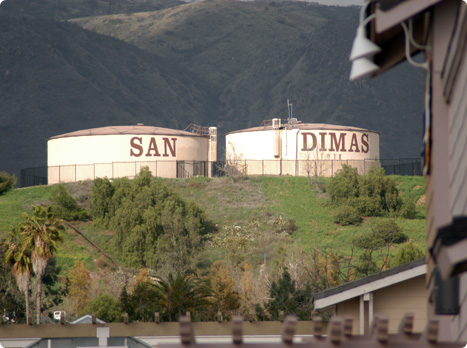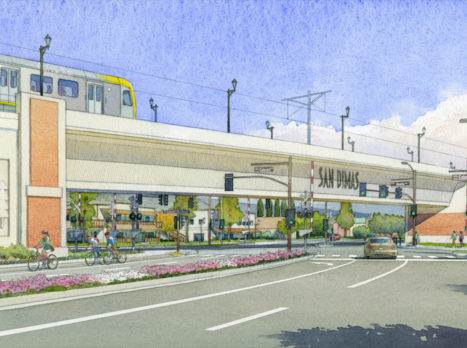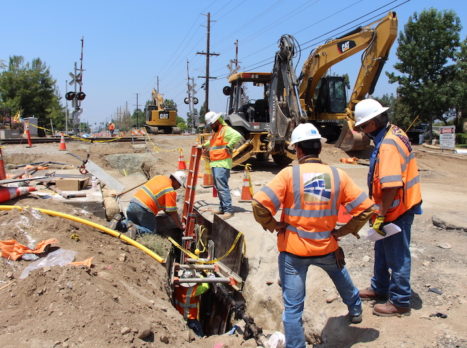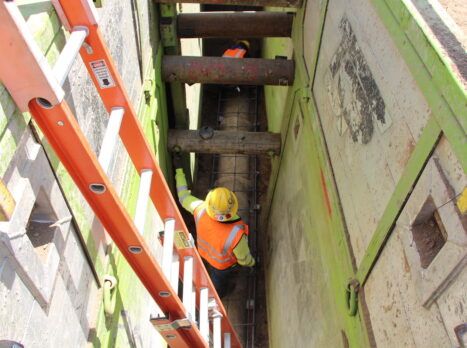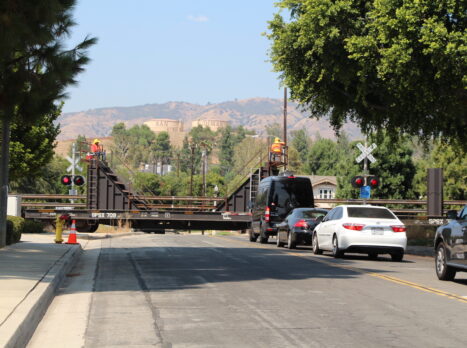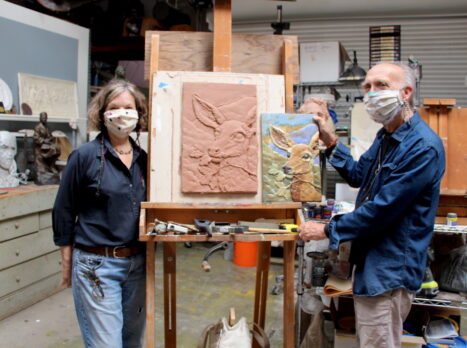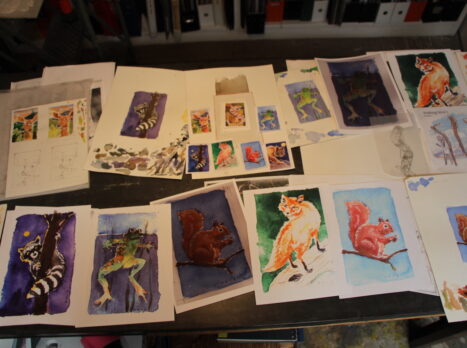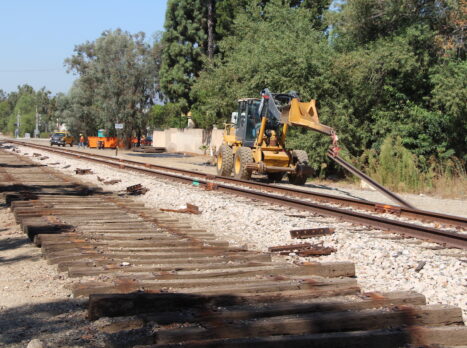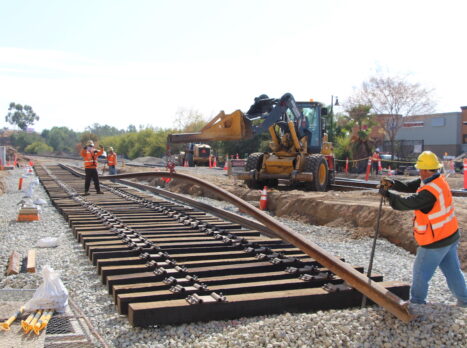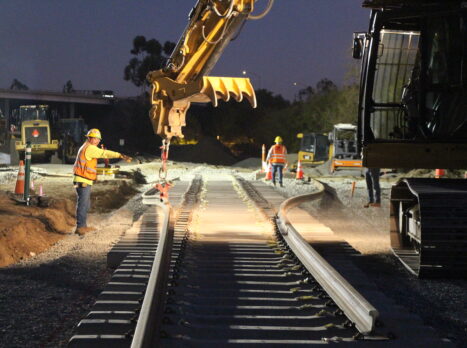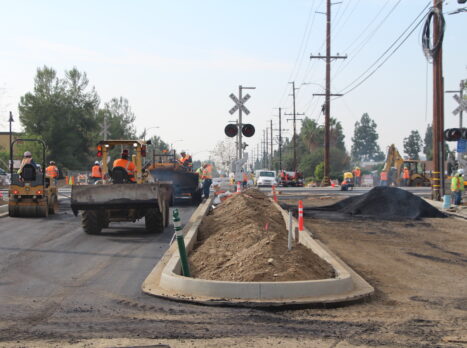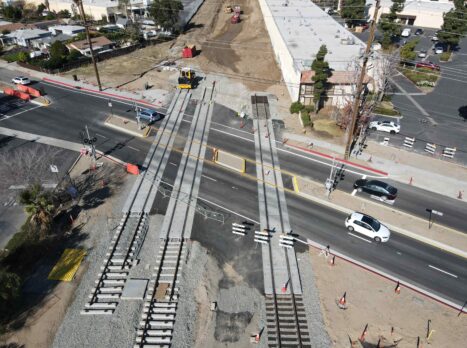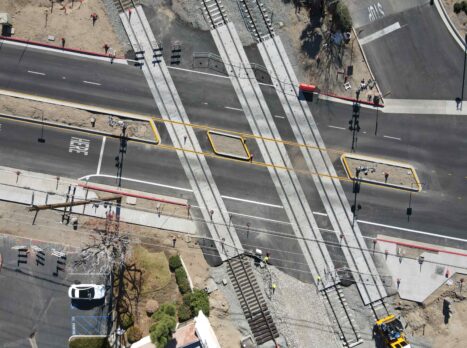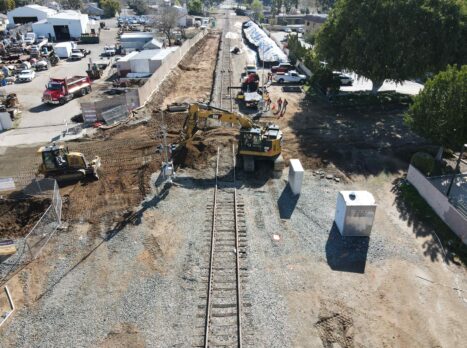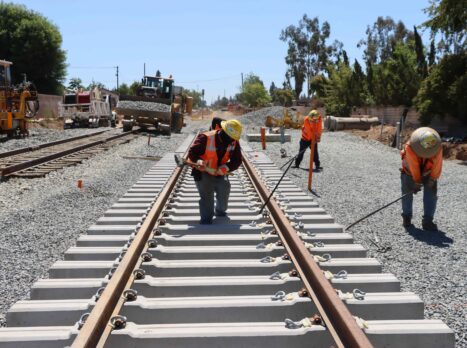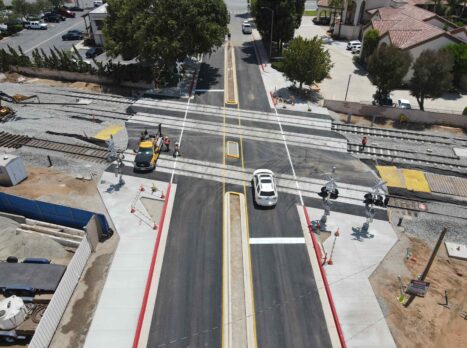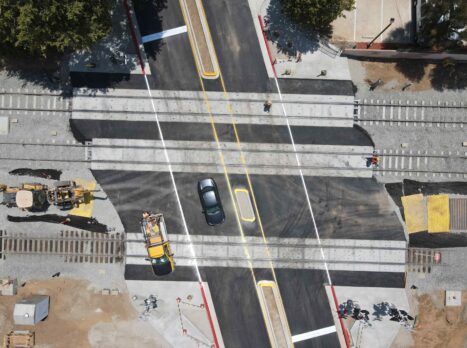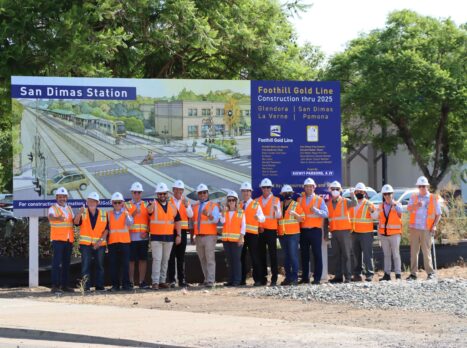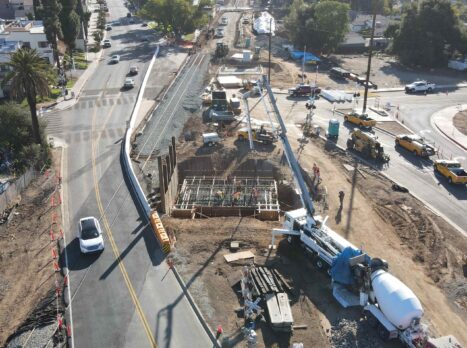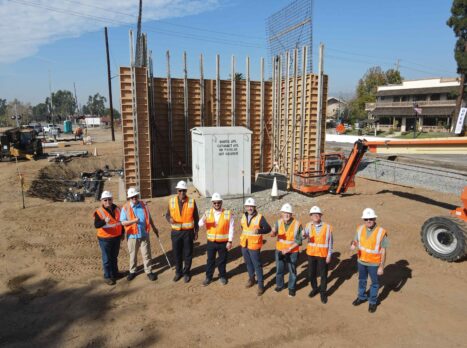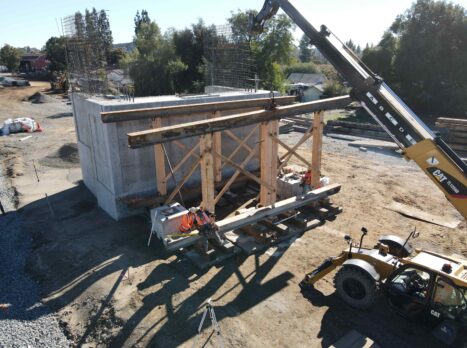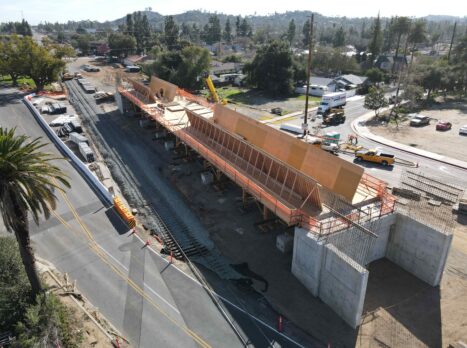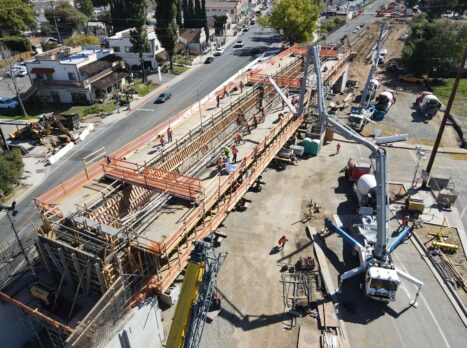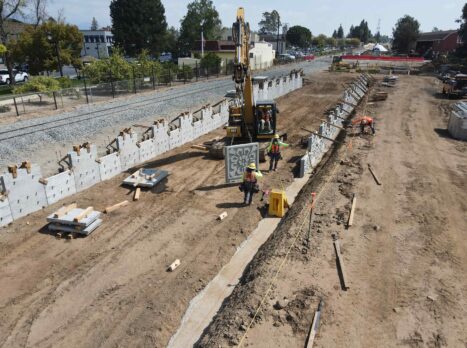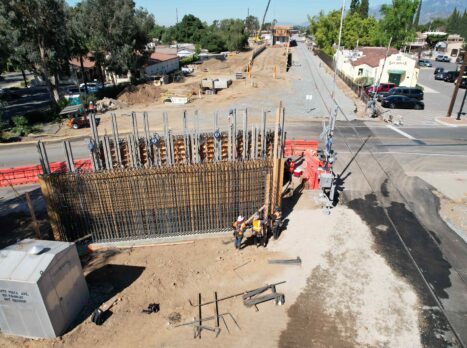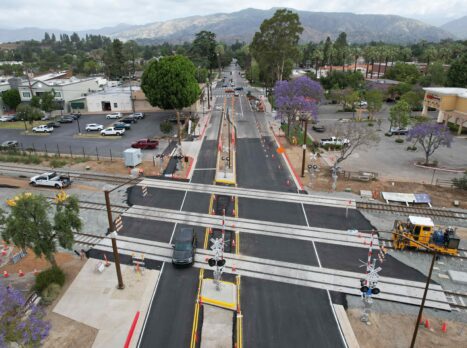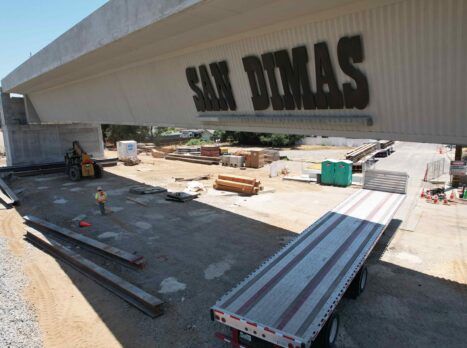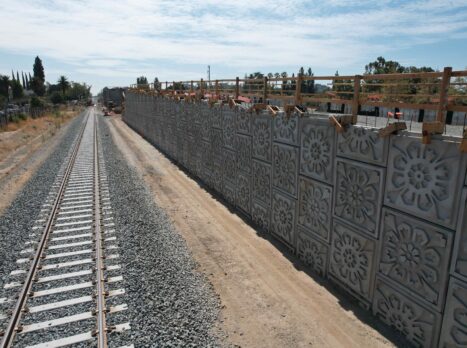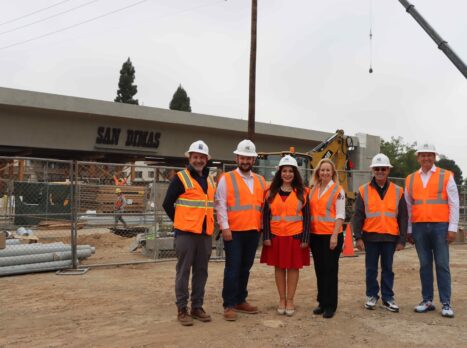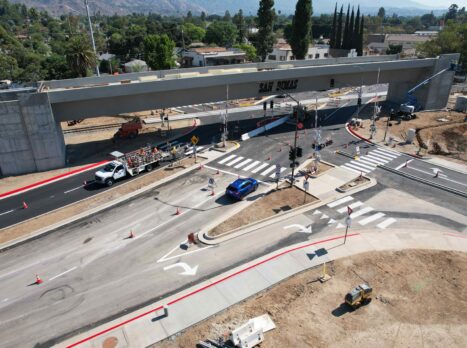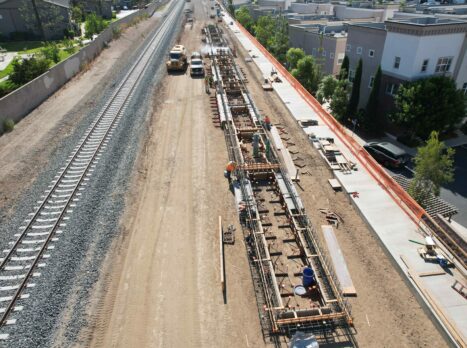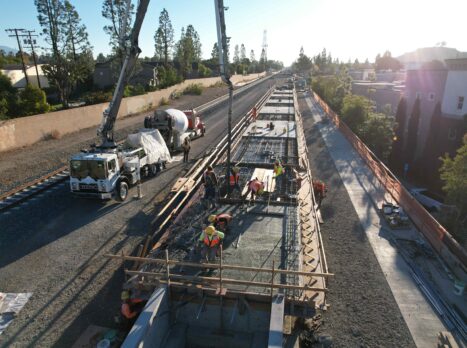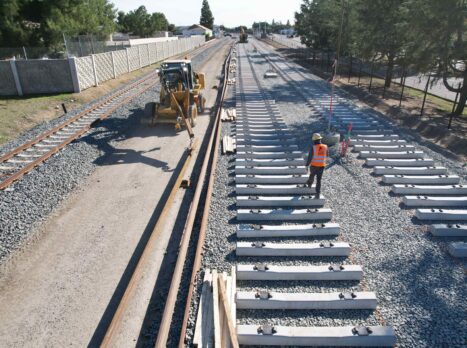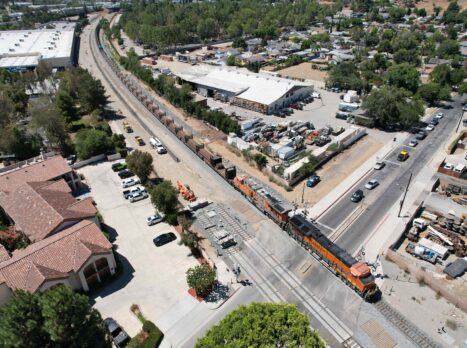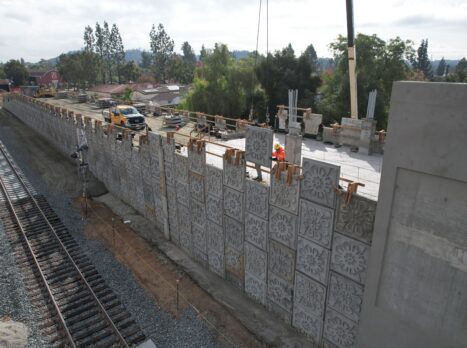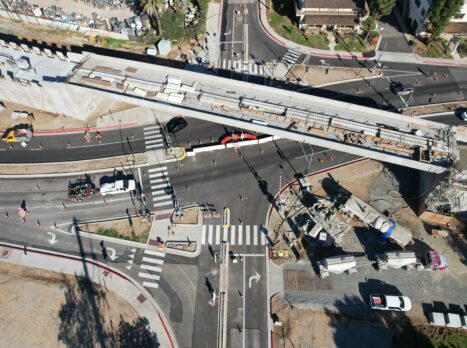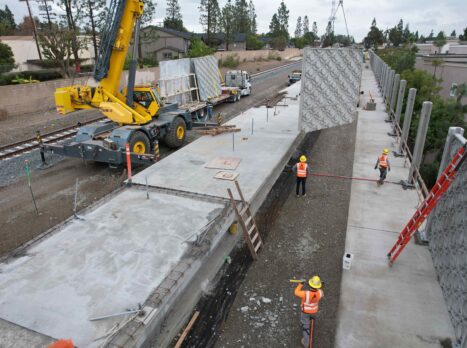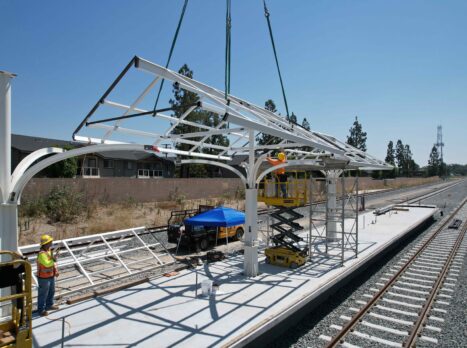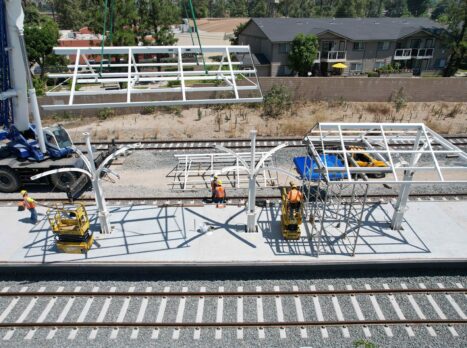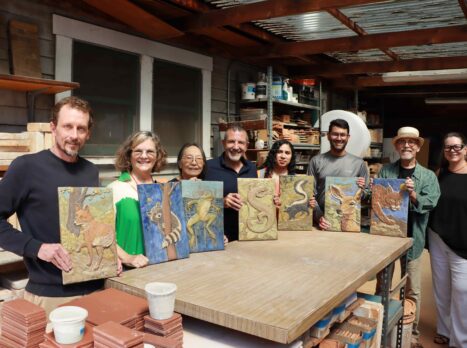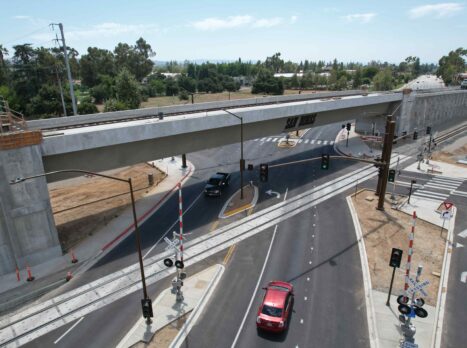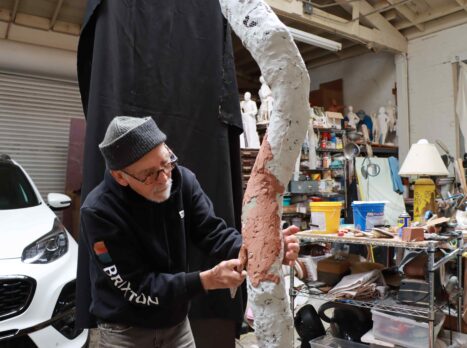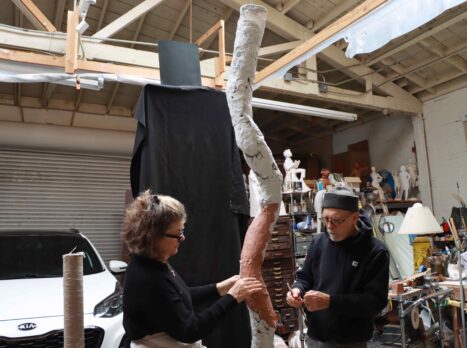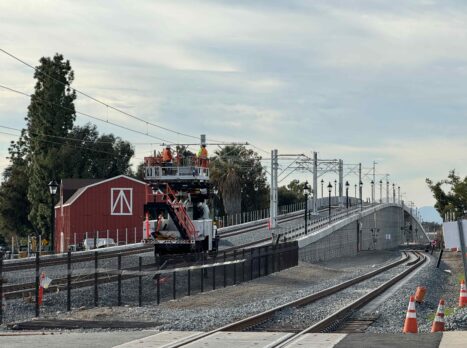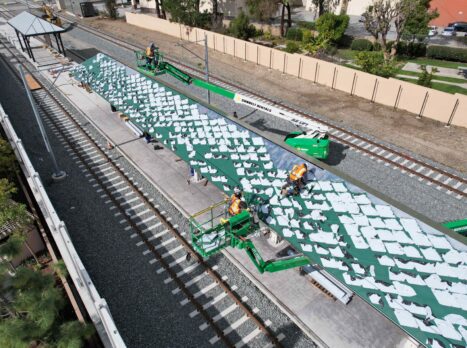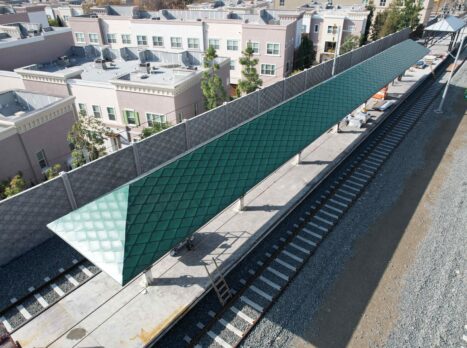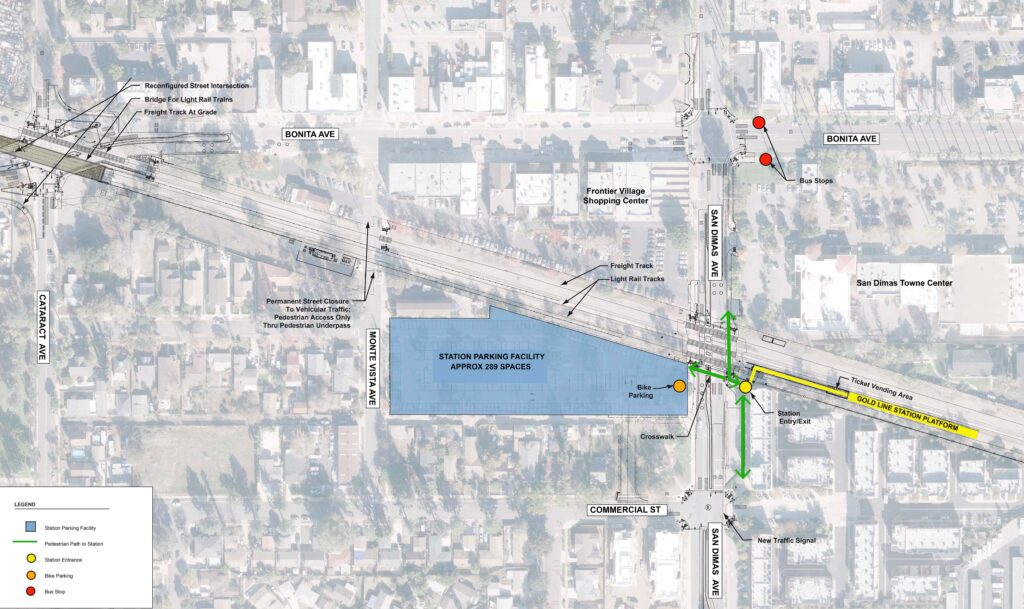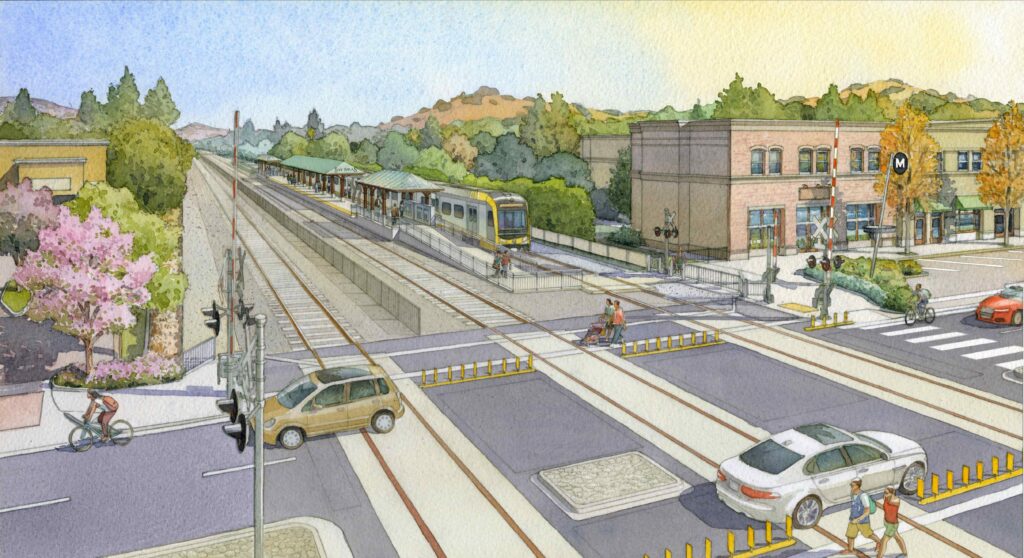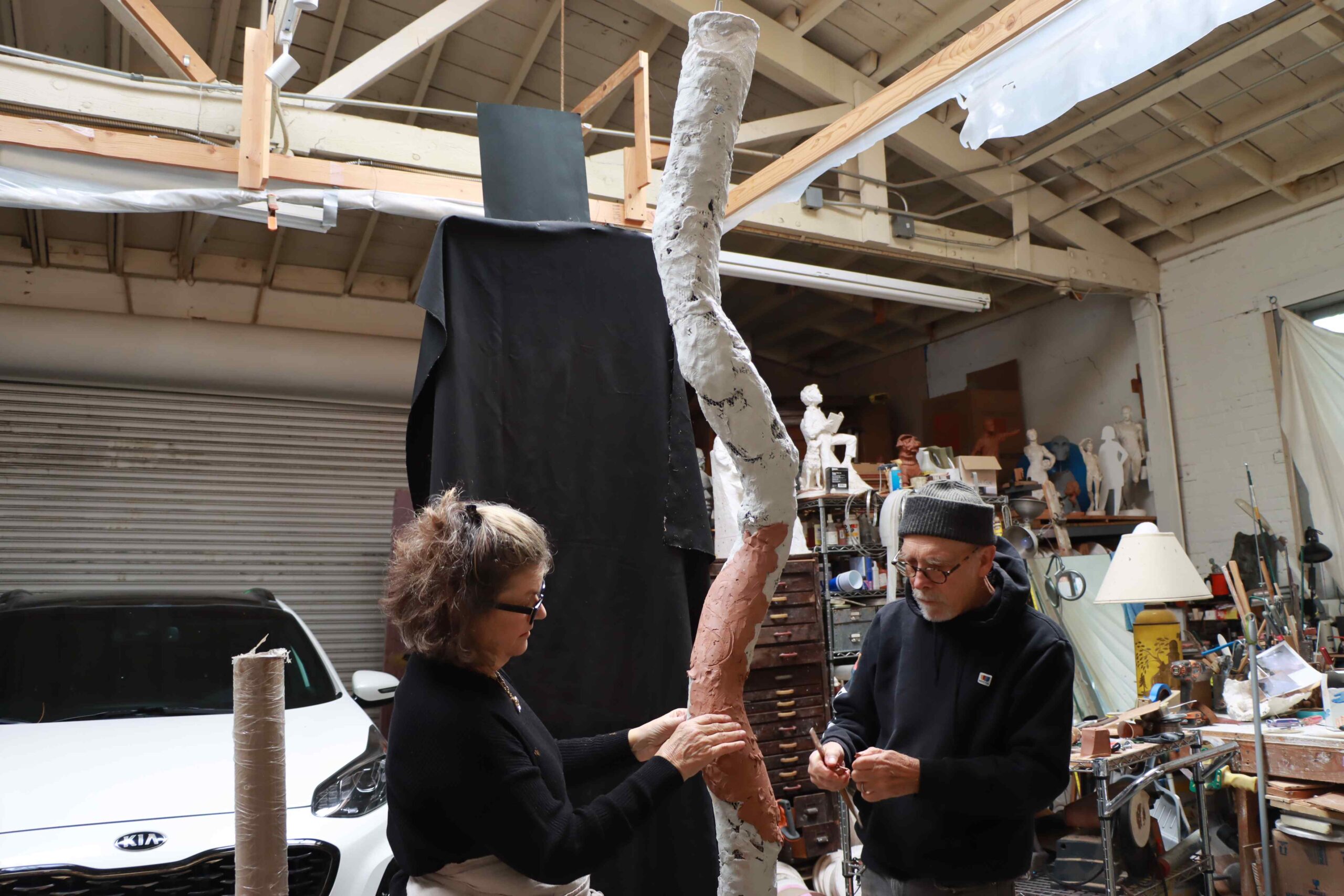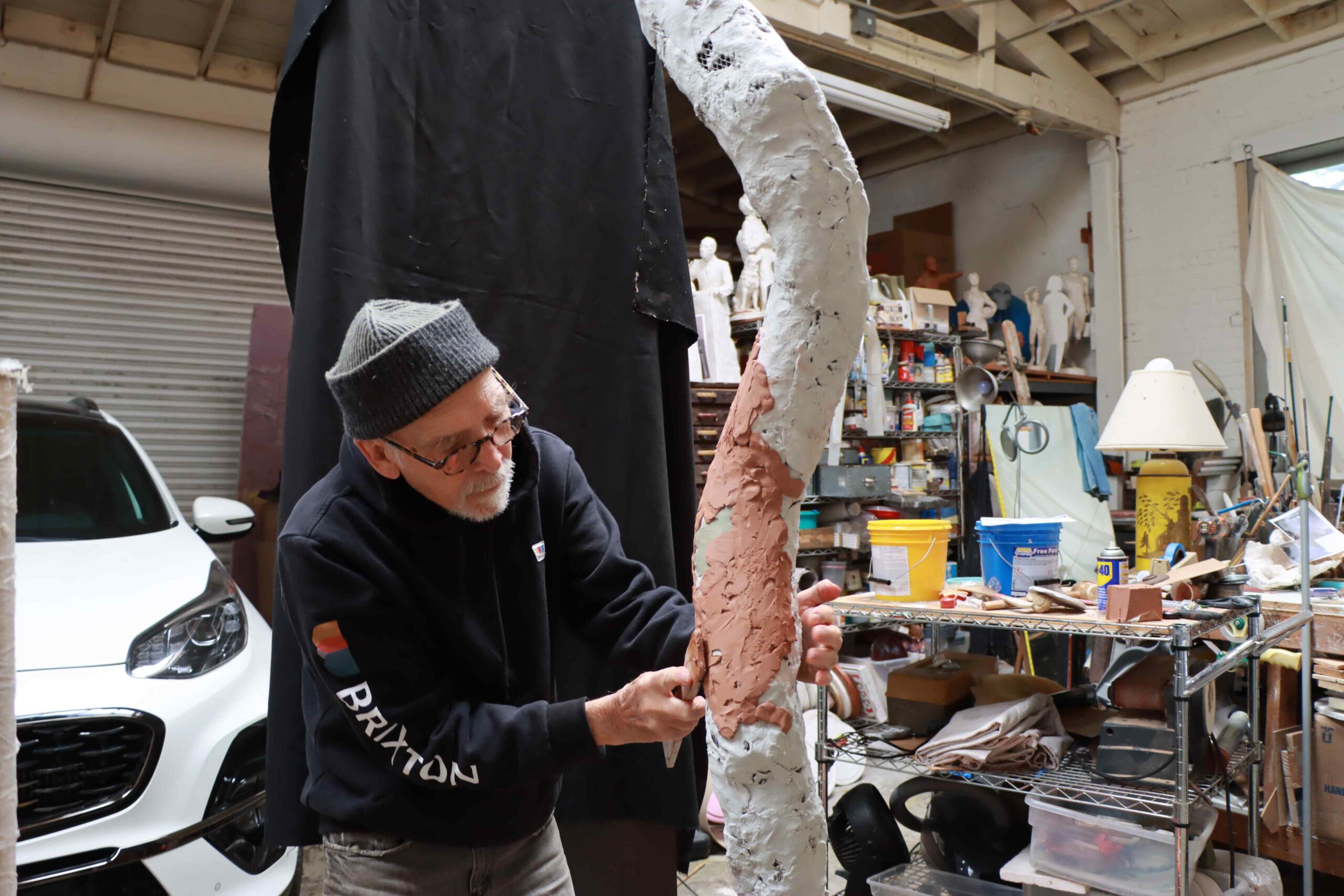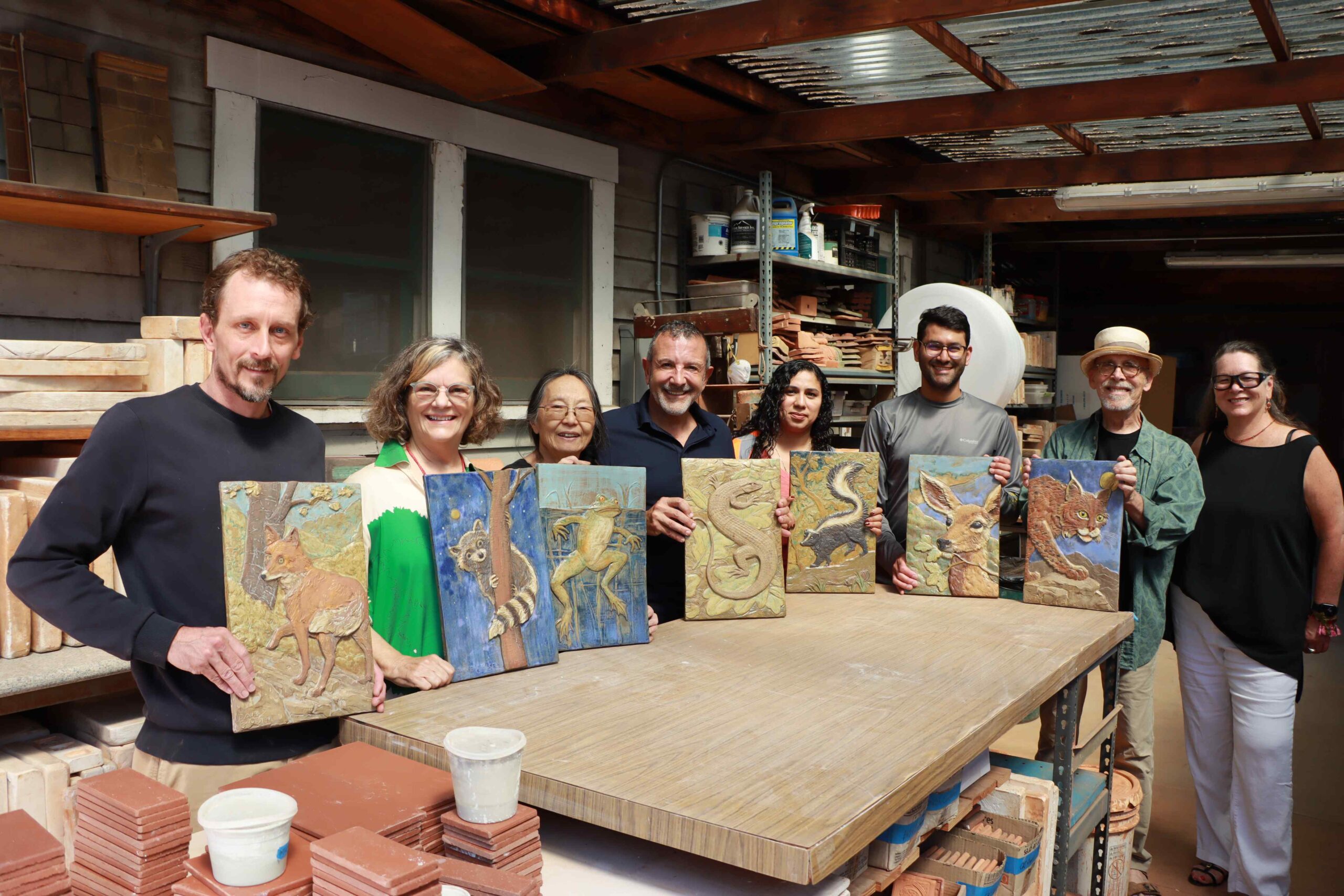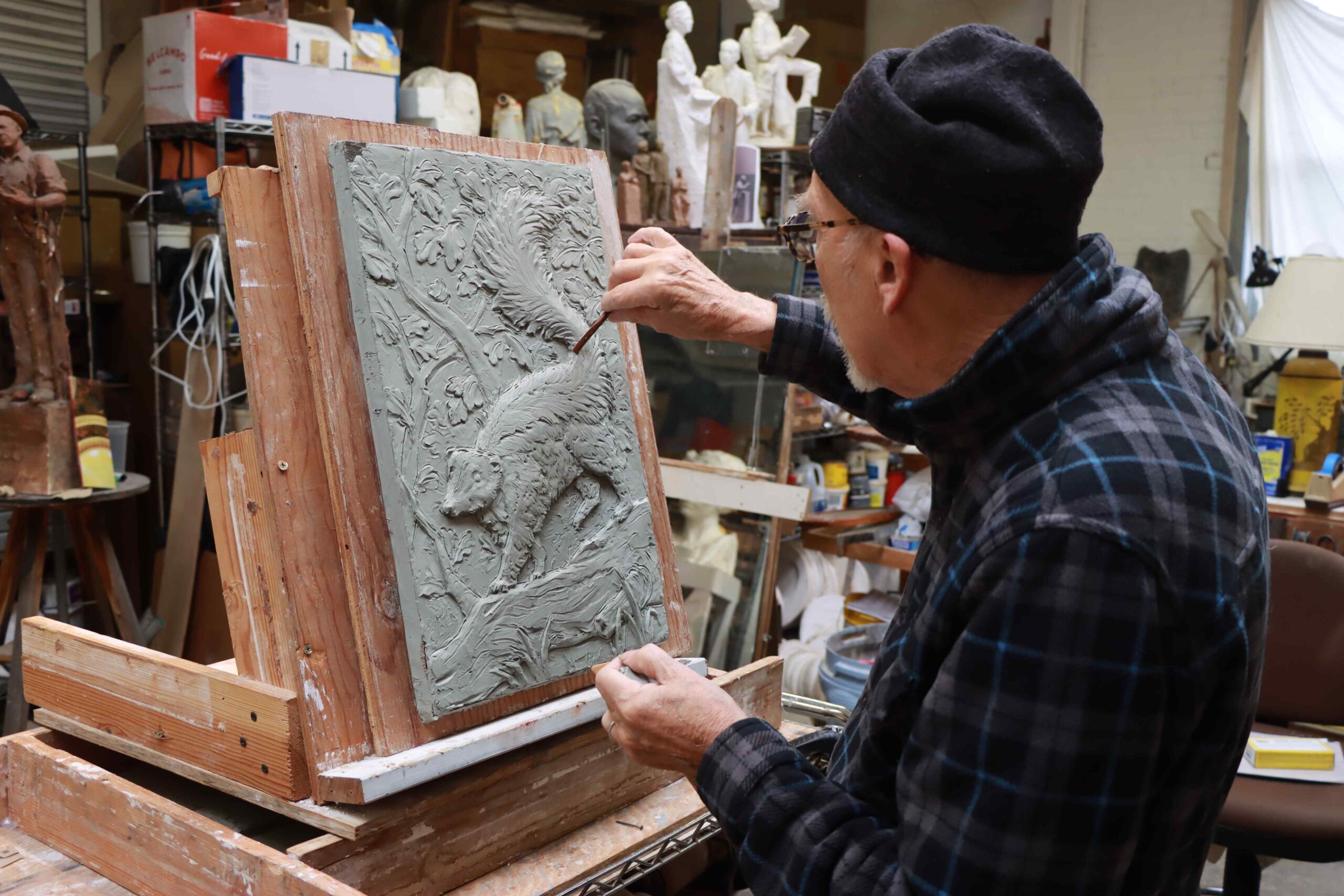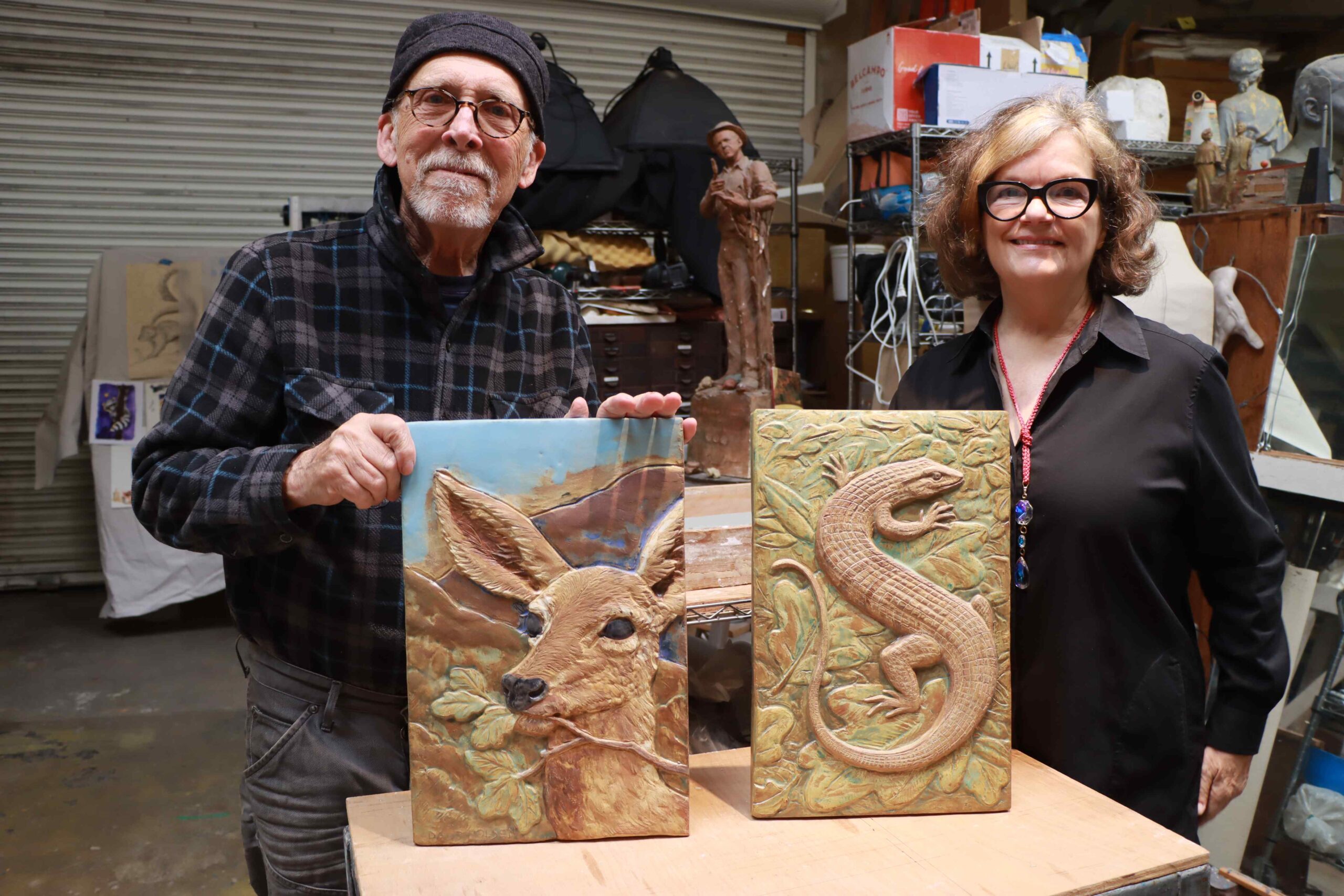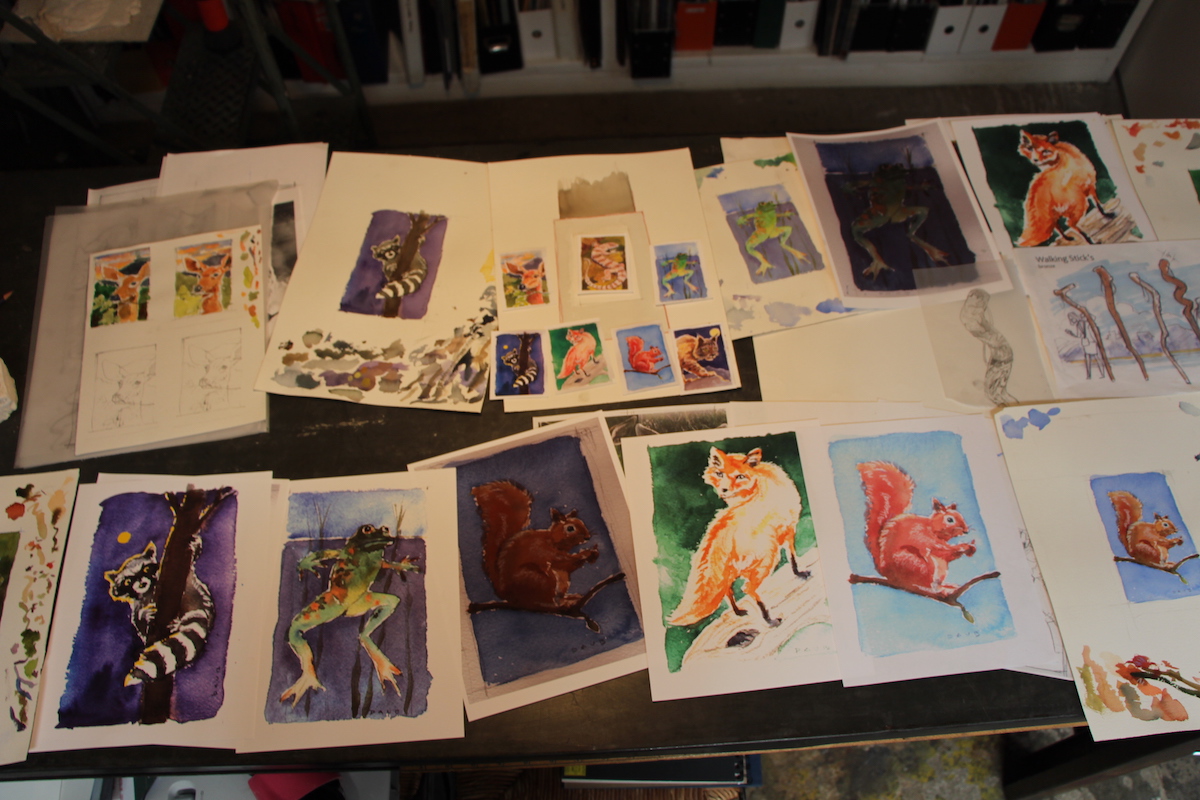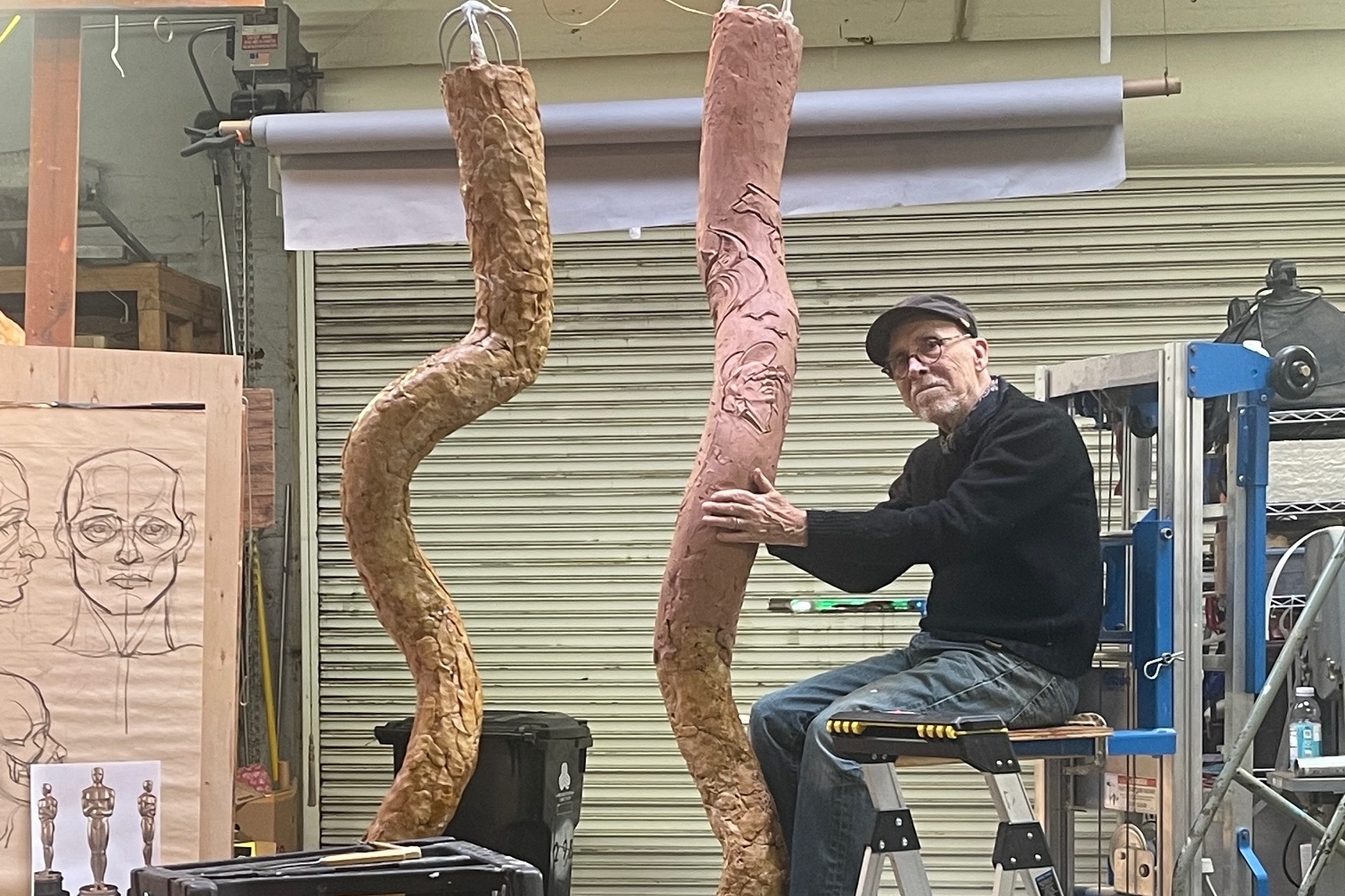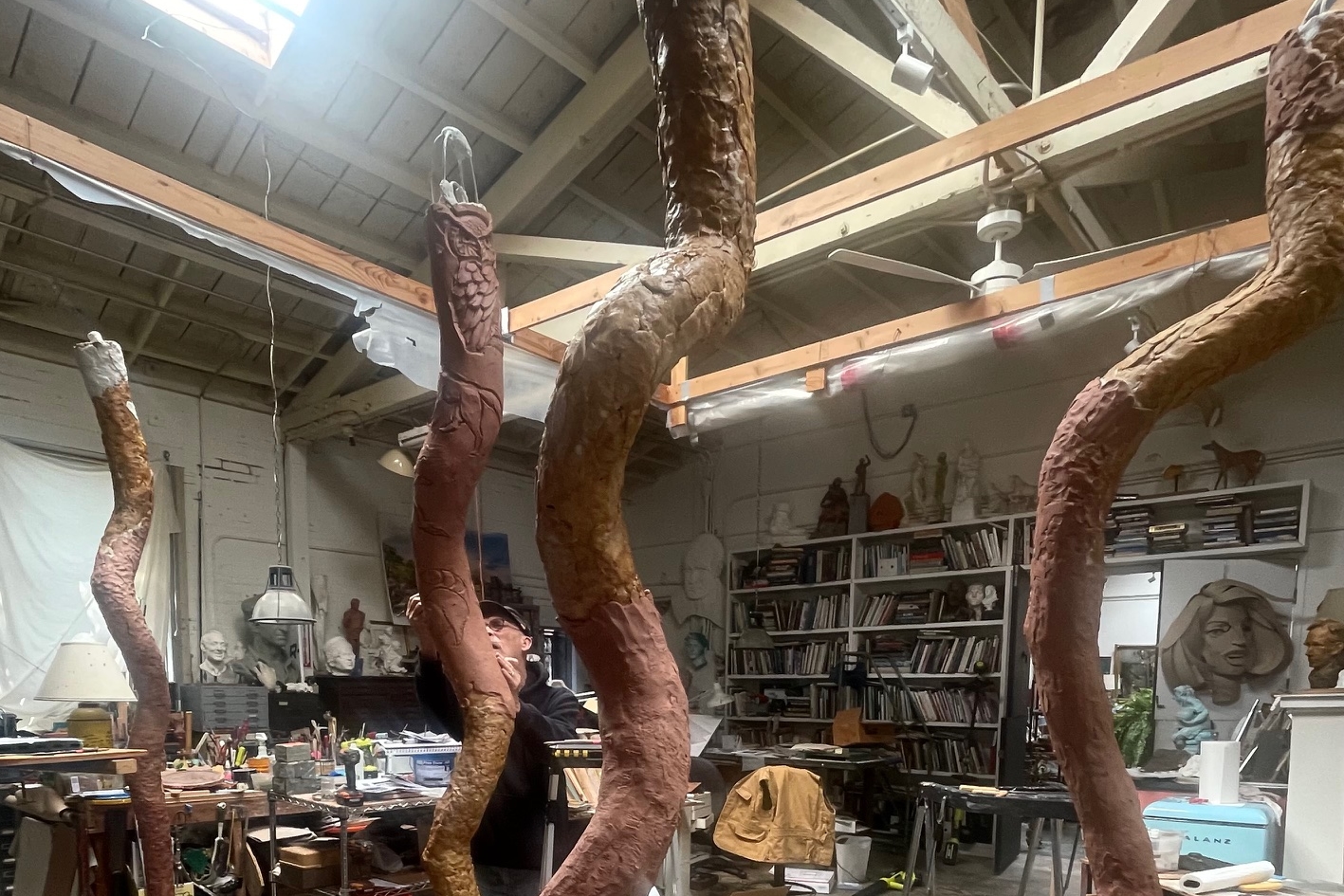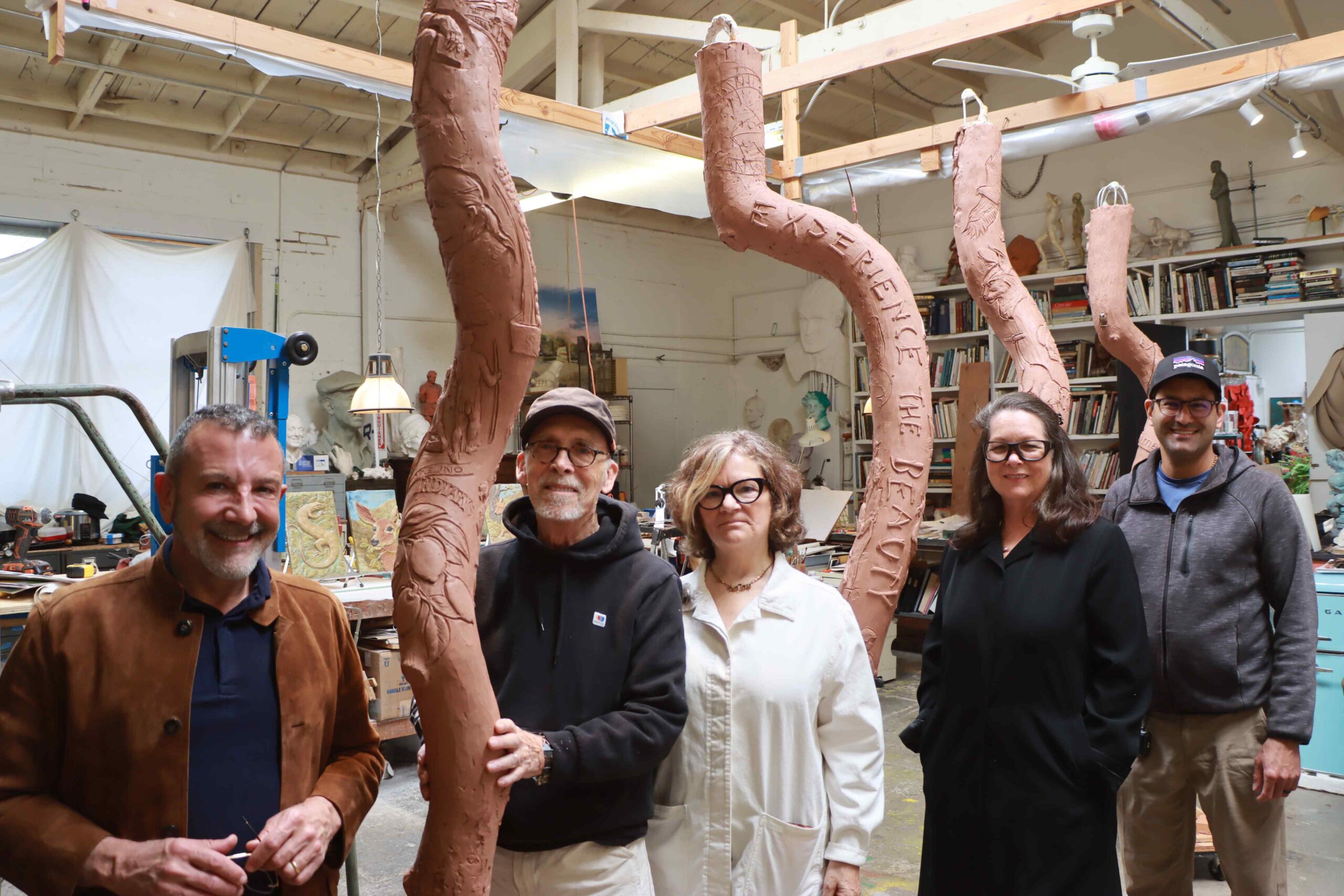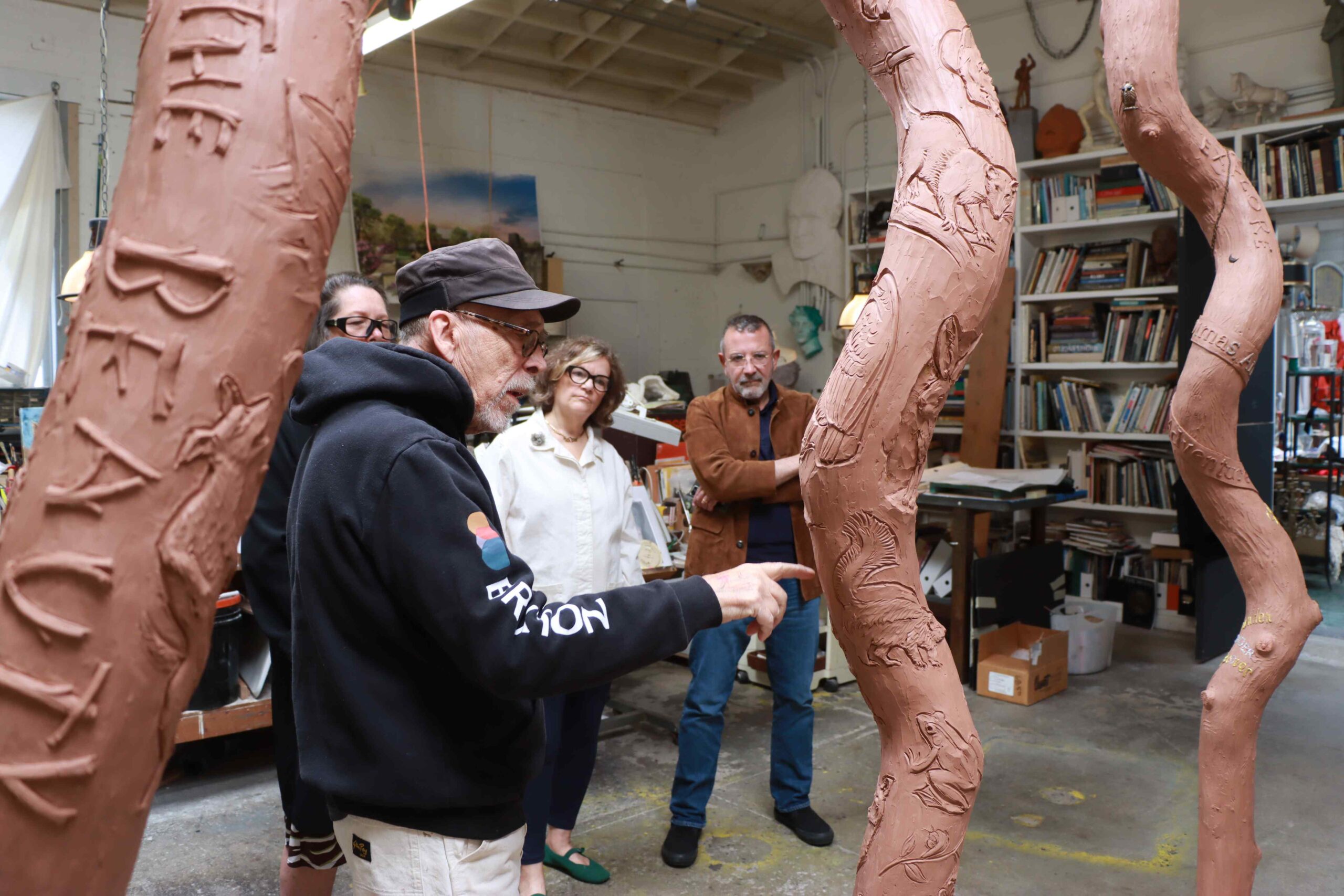renderings site plan photos
Now Available: Final Supplemental Environmental Impact Report (SEIR) for Gold Line Phase 2B Project – Evaluating Relocation of the San Dimas Station Parking Facility (Certified in July 2022)
San Dimas Station
The San Dimas Station is located east of San Dimas Avenue. The center platform station has light rail tracks on either side (one for westbound and one for eastbound trains). The single freight track that was located in the center of the rail corridor was relocated to the northern half to make room for the light rail tracks on the southern half of the corridor. While they will share the rail corridor, light rail trains and freight trains do not share tracks. The station’s 289-space parking facility (with EV charging stations, bicycle parking and a passenger drop-off zone) was recently approved to be relocated south of the railroad tracks, just west of San Dimas Avenue (on the site is the former San Dimas Park and Ride).
During the remaining construction, the community can expect temporary impacts (such as short- term lane closures, noise mostly from construction vehicles, and other construction-related issues). Permanent changes are occurring due to the project, including safety enhancements at all street crossings (raised medians, red curbing and turn restrictions within 100 feet of the rail corridor at all street crossings), relocation of the freight track to the northern half of the rail corridor, new fencing and walls along the entire rail corridor, and new overhead wires to power the more than 200 light rail trains anticipated to run daily. The reconstruction of the Bonita Avenue/Cataract Avenue intersection is now complete with new traffic signals to replace the previous stop signs. The new light rail bridge (over the Bonita Avenue/Cataract Avenue intersection) is also now complete. The bridge and intersection changes were required by the California Public Utilities Commission for safety. The new Monte Vista Avenue pedestrian underpass is now available to allow north/south pedestrian access. The freight track will remain at street level.
For safety, the following improvements were made along San Dimas Avenue: (1) a new traffic signal was installed at Commercial Street/San Dimas Avenue; (2) new right turn lanes built on San Dimas Avenue at Bonita Avenue (one northbound and one southbound) and the traffic signals upgraded; and (3) in the future (when the parking facility opens) no right turns will be allowed out of the parking facility onto Commercial Street. As part of the project, speed humps were recently installed on Railway Street.
Once completed, a trip from San Dimas to Pasadena will take about 27 minutes and further to downtown Los Angeles will take approximately 56 minutes.
Bonita Ave/Cataract Ave Intersection Bridge
The California Public Utilities Commission (CPUC) is responsible for reviewing and approving all grade crossings in the State of California where a train will cross a street or pedestrian walkway. As part of the CPUC’s extensive review process for the Foothill Gold Line project several years ago, the regulatory agency required a new bridge be built over the intersection of Bonita Avenue/Cataract Avenue in the City of San Dimas for Gold Line trains only (the freight track would remain at street level). The light rail bridge was required for safety of both the new light rail system and city streets, as the result of an estimated 200+ light rail trains crossing this intersection each day in the future. Click here for more information on the Gold Line bridge over the Bonita Avenue/Cataract Avenue intersection.
For more information on the station, including the public art planned, click here for the latest station fact sheet.
About the Artists
Eugene and Anne Olsen Daub
Eugene Daub is a San Pedro based artist nationally recognized for his sculpture and Bas-relief work. He is also the vice-president of the American Medallic Sculpture Association and a Fellow of the National Sculpture Society. Over the years, Eugene has designed and created sculpture for three of the nation’s capitals including a statue of Rosa Parks in statuary hall in Washington DC in 2013. Other public works can be found at private foundations, churches, universities, museums and urban landscapes across the country.
Eugene studied at the University of Pittsburgh, Pennsylvania Academy of Fine Art. He later taught at the Pennsylvania Academy of Fine Art and Rutgers University in New Jersey and the Academy of Arts University in San Francisco.
Anne Olsen Daub was educated at Fresno City College and Otis College of Art and Design in Los Angeles. She also lives in San Pedro and for has had a career in the in the fashion industry and at Mattel. Anne has returned to her love of painting and mixed media sculptures. She explores the use of color, fabric, found objects, corrugated paper and architectural elements in her work. Since 2002, Anne founded a line of one of a kind jewelry fashioned by hand for adornment of all people. Anne works intuitively to rethink, reimagine, conceptualize, and manipulate objects into unique and timeless mini pieces of art. These works exemplify uniqueness, character, imperfection, and conceptual archetypes.
Eugene and Anne have exhibited their artworks together and separately in various galleries and museums in the Southern California region. Based on their design concept, Eugene and Anne were selected by the city of San Dimas’ Station Design and Art Review (SDAR) Committee, later ratified by the city council, in 2005.
Station Art Plan
Their artwork will capture the city’s special “Sense of Place,” born of a unique history in the citrus industry, a connection with the land, water and geography, its flora and fauna, along with cultural and community events and activities. There are no less than 25 parks and countless trails and hiking paths in the city. The station’s various artworks celebrate the wonders of the parks, mountains and local history. A series of larger than life “walking sticks” located on the platform are inspired by the bucolic surroundings of the local natural environment. The four bronze walking sticks are highly embellished and remind the viewer of unseen wonders and majestic vistas of the San Dimas area. They evoke a sense of exploration and discovery. They are an ageless symbol of the explorer in all of us. The Daub team will also be creating 7 hand sculpted bas-relief ceramic panels that will be located on the canopy column bases of the station platform. The artworks created for the station are delightful and interactive and allow the viewer an opportunity to pause and reflect on the city’s unique character and place.
For more information on the artists and artwork, click here for the latest station fact sheet.
Future Plans
During 2006-7, the Construction Authority worked with the City of San Dimas (along with all other Foothill Gold Line cities from Pasadena to Montclair) to explore their visions for integrating transit oriented developments (TOD) near the future stations. At that time, the city was still uncertain as to the location of the city’s future station. Since then, the city decided that the station would be located east of San Dimas Avenue, opening up the possibility of further discussions about TOD in the general area. The Construction Authority and city began a new dialogue through another TOD study in 2010, which revisited the earlier concepts following the economic downturn. In 2016, the Construction Authority measured the progress of TOD implementation since the first segment of the line opened for passenger service in 2003, including reviewing the potential TOD that could take place near the stations looking forward. Click here to learn more about the TOD Studies.
First/Last Mile Plans
The first/last mile plan for the future San Dimas station is overseen by Metro. Metro coordinated with the Construction Authority and City of San Dimas to create a first/last mile plan for the San Dimas station area. The plan was adopted by the Metro Board of Directors on June 27, 2019.
To learn more about the first/last mile plan for the future San Dimas station, click here to visit Metro’s first/last mile plan website. NOTE: If you click on the link, you will be directed away from this website.





